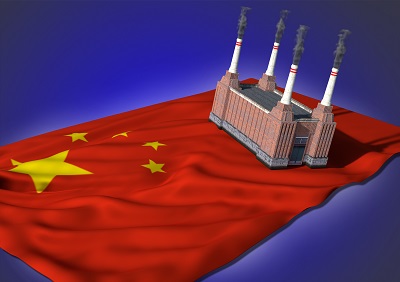Part the First. A Few Words in Response to the Excellent Commentariat of Naked Capitalism. No one knows better than I that funding of science in the United States is hit or miss. My overall average flirts with the Mendoza Line, which is not so bad. For most I do not miss the grant treadmill/lottery, however. The mechanisms at the National Institutes of Health and the National Science Foundation can be improved, as I have written here before. NIH tends to be conservative in its funding. NSF can be downright inscrutable, as when it asks for high-risk, high-reward theoretical and quantitative proposals (i.e., with spurious mathematical apparatus attached) in molecular and cellular biology. No, actually. That is not how molecular and cellular biology works. Besides, “high-risk, high-reward” is a silly formulation. The only risk is that the experiments will not work or will not work as planned. My research has included both kinds. Yes, we all have a plan, but the better scientists know that all science worth doing is provisional. They also know how to pivot when the data give them not the wrong answer but an unexpected answer. This is how scientific innovation occurs, after the fact instead of before. And this reward usually comes from an unexpected direction, which has also been my experience and that of most of my colleagues who emphasized “scientist” over “principal investigator.”
A comment from kriptid earlier this week describes exceedingly well one of the major the problems with how we fund science at NIH (emphasis added):
One of the problems is that the Stanley Cohen model of research (small lab, focused projects and mentorship, maintaining working knowledge of experimental processes in the lab) is dead, for all intents and purposes.
I worked for a respected PI in graduate school with a lab of nearly 20 students and post docs. He was a complete workaholic…
Despite the time he applied, his lab was too big for him to track what was going on. The low-performing lab members were essentially completely on their own. He was excellent at grant writing, and our lab was flush with cash and we churned out high impact publications regularly.
The amount of waste and mismanagement of funds I observed would be completely unconscionable in any other profession. There were literally tens of thousands of dollars of reagents that expired, everyone ordered their own material and there is no mechanism for sharing between the labs.
At year end, the department put together a report on per-person per lab costs. We were absolutely by far the leader at a multiple of 2-3x the next nearest lab. He spoke about this almost proudly, claiming that our expenses were high because of our work, and that the costs didn’t matter because we would just get more money anyway in the next grant cycle.
Now, remember, this was a good, productive lab scientifically, if the only benchmark was research output and prestige. But the wastefulness and largesse is utterly out of control and I know that my experience is not unique.
The purpose of this story is not to justify the cuts, but I’d like to also point out that the circuitous discoveries cited in this article (on breast cancer) arose serendipitously via discoveries made by multiple independent researchers…we need to be honest about the shortcomings and largesse of the research enterprise where professors sit atop like feudal lords over the graduate students and post docs (peasantry) and make zero efforts to reform a system that we all know needs it badly.
I have known this principal investigator with excellent grantsmanship well, several times. One has over 450 publications as of today. But he is still not in the National Academy of Sciences, which he views as both a travesty and a tragedy. Another was upfront about the goal of his lab to publish in so-called “high impact” journals rather than think hard and do the best science possible and see how things come out. Or, to be a scientist. I would add that most of the scientific fraud making the current rounds comes from such labs, which have skewed priorities and slack management that allows miscreants to act on their worst inclinations. In any case, a limit on how much NIH funding any one laboratory can have would only be an improvement.
But this truth does not mean the entire edifice must be torn down (and not rebuilt) because some people abuse the system for reasons of ego and faux empire building. Or that NSF and NIH grants already awarded, according to the rules in place, after years of work should be cancelled. Reform will be sufficient, thank you. And here I must confess my priors. I came of age in science just before the Bayh-Dole Act of 1980 “redirected” American basic research to that which might make money, now. Pro tip: It seldom does. So, yes, I have a different view of basic research and where it stands at the foundation of all biomedical and clinical science. Along with most scientists who view their work as a calling, I was appalled when Anthony Fauci identified himself as “representing science” during the height of COVID-19.
Part the Second. Renewal of NIH Grants Linked to More Innovative Results. In news to no one who has ever tried to discover something new about the natural world, it turns out that scientists who are able to build on their research are the most innovative. And innovation cannot be scheduled. It takes time:
In its bid to reduce government spending and rein in ‘woke’ science, the administration of US President Donald Trump has, over the past three months, terminated about 800 active research grants awarded by the National Institutes of Health (NIH). Now, a study published late last month in the journal Scientometrics highlights the long-term benefits of renewing existing grants, finding that US scientists who received renewals from the NIH over the past four decades produced more novel research than those who didn’t.
Bai and her co-author, Baicun Li, also at CASISD, analysed the scientific output of 642 US scientists who won NIH funding between 1985 and 2021. The study focused on recipients of R01 grants — common, yet highly competitive, awards from the NIH that provide up to five years of financial support and can be renewed several times. As of last year, the success rate of winning an R01 grant was 20%, on average, and the rate for winning a renewal was about 45%.
Bai and Li…(examined)…the ‘novelty’ of researchers’ publications, calculating a score on the basis of the uniqueness and trendiness of key medical words and concepts in their papers. The pair also measured the ‘switching probability’ for scientists — how likely they were to hop to new research topics — and the ‘diversity’, or spread, of topics they studied using a model that calculated the similarity of their publications over a set period. The results revealed that researchers who received renewals without a funding gap were less likely to switch research topics and investigate a wide array of subjects than were those in the control group, and they produced papers featuring newer or more unconventional combinations of ideas.
I remember the first time I ran across Scientometrics on the Current Journals Table in the Science Library, back when that was a thing. I didn’t see the good of the “measurement of science as science.” I take it back. Note that the article analyzed the renewal of research grants to these scientists, not the multiplication of grants awarded to these principal investigators, which has been shown to be associated with significant diminishing returns by similar measures.
Part the Third. NSF Faces Radical Shake-up as Officials Abolish its 37 Divisions. This just came in over the transom as I was putting this Coffee Break together:
The National Science Foundation (NSF), already battered by White House directives and staff reductions, is plunging into deeper turmoil. According to sources who requested anonymity for fear of retribution, staff were told today that the agency’s 37 divisions—across all eight NSF directorates—are being abolished and the number of programs within those divisions will be drastically reduced. The current directors and deputy directors will lose their titles and might be reassigned to other positions at the agency or elsewhere in the federal government.
The consolidation appears to be driven in part by President Donald Trump’s proposal to cut the agency’s $4 billion budget by 55% for the 2026 fiscal year that begins on 1 October. NSF’s decision to abolish its divisions could also be part of a larger restructuring of the agency’s grantmaking process that involves adding a new layer of review. NSF watchers fear that a smaller, restructured agency could be more vulnerable to pressure from the White House to fund research that suits its ideological bent.
As soon as this evening, NSF is also expected to send layoff notices to an unspecified number of its 1700-member staff. The remaining staff and programs will be assigned to one of the eight smaller directorates. Staff will receive a memo on Friday “with details to be finalized by the end of the fiscal year,” sources tell Science. The agency is also expected to issue another round of notices tomorrow terminating grants that have already been awarded, sources say. In the past 3 weeks, the agency has pulled the plug on almost 1400 grants worth more than $1 billion.
I suppose there will be much rejoicing throughout the land as this news plops down on the doorstep of MAGA World. My next question is this: What scientist who views her work as a calling (yes, I am old fashioned) will trust NSF ever again? Personally, I believe this final part of the article is a key:
Last week, staff were briefed on a new process for vetting grant proposals that are found to be out of step with a presidential directive on diversity, equity, and inclusion (DEI), which bans any research that preferentially favors one demographic group or excludes participation by other groups.
All NSF grant applications up to this year, included a “Broader Impacts” section. My final application included collaboration with a high school biology program that would have introduced the students to cell biology, with the goal of having them publish and present their results at the annual meeting of the American Society for Cell Biology (which would have been held less than forty miles from their school in the second year of the funding period). Their biology teacher had a PhD in Molecular Evolution, and the project would have combined molecular and cellular biology with molecular evolution, both at a high level. I cannot think of a better way to introduce young students to science as how it is done rather than how it is presented in a textbook. The grant did not get funded, but in the present circumstances it would certainly have been cancelled either before or after an award, based on inclusion of the required Broader Impacts final page in a 15-page proposal.
Part the Fourth. Cancer Research and the Fierce Urgency of Now. No one in this world has been unaffected by cancer. Which is why the disruptions in cancer research during the first few months of Trump v2.0 are troubling. From this short article in TheScientist, Funding Disruptions in Cancer Research Affect Patients’ Lives:
Cancer research is in its prime. With advances in early cancer detection and targeted immunotherapy approaches, the overall cancer death rate has been steadily declining in the US. Research developments helped avoid an estimated 4.1 million cancer-related deaths in the US over the last three decades.
“But the conditions that made this progress possible are beginning to erode,” said Patricia LoRusso, a medical oncologist at the Yale School of Medicine. With the new US administration’s policy updates this year, the National Institutes of Health (NIH) and universities face huge budget cuts. Amidst battling canceled grant fundings, hiring freezes, and halted clinical trials, US research has taken a hit.
Larry Saltzman, a retired physician and former research director of The Leukemia & Lymphoma Society, agreed. Saltzman was diagnosed with chronic lymphocytic leukemia and small lymphocytic lymphoma in January 2010. Since then, he has participated in six clinical trials, and undergone more than a dozen treatments, which have helped him survive through 10 relapses. “Without ongoing funding for cancer research, I, like many others, would not be surviving the dreaded big C,” he said. “I’m living proof of what the NIH research can do.”
We are all Larry Saltzman, at one time or another. Or a family member or friend is. No exceptions. All of us. And in another inscrutable action, the NIH Clinical Center is under extreme duress due to budget cuts. This is the hospital that leads the way in clinical trials of all kinds, for cancer and other severe diseases that are difficult to treat:
That mission began in 1953, when the Bethesda, Md., center was launched to promote collaboration between NIH scientists and physicians. It’s a hospital with no billing department; for volunteering for studies of cutting-edge but unproven therapies, participants receive free care. The center ran roughly 1,500 active study protocols in 2023 (pdf) with the support of a permanent staff of 1,808 federal employees.
The Clinical Center has long prided itself on drawing patients from around the world and had around 600 active trial participants from other countries in 2023, according to an annual report. It’s not charity. Focusing on the rarest diseases and hardest-to-treat patients often means having to look beyond the U.S. Otherwise, it can be hard to generate the data needed to advance treatments for Americans.
A policy governing NIH visitors who are not U.S. citizens or permanent residents has compounded the problem. The policy states that “non-U.S. person visitors” pre-register with NIH at least 30 days before arriving on its campus, and that they may be required to be escorted during their visit by an NIH staffer who is a citizen or permanent resident.
An email reviewed by STAT stated that the policy’s enforcement began on March 31. “This is a change from previous guidance, and there will be no exceptions,” the message read. “THIS INCLUDES PATIENTS.”
The new policy dates back to rules for visiting federal buildings adopted more than a decade ago, said Gilman, the former Clinical Center CEO. But the NIH had long held out. When the Biden administration finally announced the policy at the end of last year, Gilman said he was assured that it wouldn’t prevent patients from visiting the campus and that information would not be shared with immigration officials.
Part the Fifth. What is MAHA Really Up To? The NIH Clinical Center is also where Dr. Kevin Hall has done some of the very best work on the health consequences of the ultra-processed foods that are such a large part of our diet. That is, “has done, but will not do in the future.” As the CNN headline put it, Top NIH nutrition researcher studying ultraprocessed foods departs, citing censorship under Kennedy. Whatever the final outcome of research on ultra-processed foods and human health, the research of Kevin Hall will be a large part of the answer. This is no way to run a research program that is in the disinterested pursuit of useful information about the natural world, in this case human health and nutrition. You cannot make America healthy again by running off the best scientists doing the research on that very subject.
We should also note that MAHA influencer Casey Means, MD, has been chosen by the President to be the next Surgeon General of the United States. Some will say the post of Surgeon General has become largely ceremonial. Perhaps. But Surgeon General Luther Terry directed and released the 1964 Report on Smoking and Health, about ten years after Richard Doll and Bradford Hill showed without a doubt that smoking causes lung cancer. They just did not know the molecular mechanisms yet, as we do now:
Analyzing more than 7,000 scientific articles and papers, the report finds that smoking is linked to chronic bronchitis, emphysema, heart disease, and lung cancer. The release of the report was one of the top news stories of 1964, leading to policies that aimed to discourage smoking, such as the Cigarette Labeling and Advertising Act of 1965 and the Public Health Cigarette Smoking Act of 1969.
Some of us are old enough to remember cigarette ads on television. They are not missed. I was living in tobacco country when indoor smoking bans went into effect about twenty years ago. The restaurant and bar owners pitched a reg’lar fit as they said in those parts. And then to their great surprise, they saw their businesses get stronger. Imagine that. Somewhere in this is an argument about positive and negative liberty. The Merchants of Doubt still maintain that smoking and lung cancer, heart disease, and emphysema are unrelated. They are wrong. Casey Means, MD, was discussed here previously in Make America Healthy Again: Is MAHA a Trope or a Movement? If chronic disease caused by environmental insult – emphysema, heart disease, obesity, metabolic syndrome – is to be the major focus of the Department of Health and Human Services going forward…never mind.
Part the Sixth. MAHA and Soft Eugenics. This topic for today’s Coffee Break was included in Links, on May 7th so all I will do is recommend it again for those who missed it. Perhaps more to come on this as a result of summer reading.
Part the Seventh. Good News on Intranasal Vaccines. A review was published earlier this week entitled Nasal vaccines for respiratory infections. This is surely the way to use modern medicine to combat respiratory viruses, with SARS-CoV-2 (and other inevitable lethal coronaviruses) being the primary focus. From the Abstract:
Beginning with Edward Jenner’s discovery of the smallpox vaccine, the ever-expanding repertoire of vaccines against pathogens has saved many lives. During the COVID-19 pandemic, a revolutionary mRNA injectable vaccine emerged that effectively controlled the severity of disease caused by SARS-CoV-2. This vaccine induced potent antigen-specific neutralizing serum IgG antibodies, but was limited in its ability to prevent viral invasion at the respiratory surfaces. Nasal vaccines have attracted attention as a potential strategy to combat respiratory infections and prepare for future pandemics. Input from disciplines such as microbiology, biomaterials, bioengineering and chemistry have complemented the immunology to create innovative delivery systems. This approach to vaccine delivery has yielded nasal vaccines that induce secretory IgA as well as serum IgG antibodies, which are expected to prevent pathogen invasion, thereby diminishing transmission and disease severity. For a nasal vaccine to be successful, the complexity of the relevant anatomical, physiological and immunological properties, including the proximity of the central nervous system to the nasal cavity, must be considered. In this Review, we discuss past and current efforts as well as future directions for developing safe and effective nasal vaccines for the prevention of respiratory infections.
A few comments are in order. Edward Jenner did not discover the smallpox vaccine, but he did formalize the ancient practice of variolation to prevent smallpox transmission and infection (the milkmaid/cowpox connection is mythical, however). Eventually the vaccine eliminated smallpox, with the last known case diagnosed in 1975. The primary reason that intranasal vaccines are expected to work with respiratory viruses is that they will prevent infection upon first contact. This is especially important for coronaviruses because durable immunity that prevents infection and transmission of coronaviruses is a unicorn. This has been known for at least 80 years. While it is true that the recent COVID-19 vaccines reduced severity of disease in millions and thereby prevented many deaths, this is not how the vaccines were “oversold.” That these vaccines did not prevent transmission and disease is a primary the recent surge in vaccine skepticism and hesitancy.
Part the Eighth. When Your Car Starts Making a Funny Noise, Turn Up the Radio. From a story heard on the way to work this morning, there can be nothing to say about this other than “Denial ain’t just a river in Egypt.” It has been true for the past 30-40 years that property and casualty insurance eventually would be the signal indicator that climate change is real. We have passed that crossover point. “Who is so deafe, or so blynde, as is hee, that wilfully will nother heare nor see.”
See you next week.























